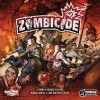profile badges
...
...
...
...
recent achievements

Amateur Grader
Grade 10 more reviews or tips by clicking "Yes" or "No" in response to the question "Was this helpful?"
Grade 10 more reviews or tips by clicking "Yes" or "No" in response to the question "Was this helpful?"

Followed my first game
Follow a game by clicking "Follow" on the game page
Follow a game by clicking "Follow" on the game page

My First Wish!
Add a game to your Wish List by clicking the "Want It" button on a game page.
Add a game to your Wish List by clicking the "Want It" button on a game page.

Reviewed My First Game
Submit a game review
Submit a game review














Magic: The Gathering
I’ve been playing Magic: The Gathering (MTG) on and off since 1993, shortly after my college room mate brought a deck back from Gen Con. My first collection financed a year of graduate school, if that provides any insight into how much I played.
With an investment equivalent to a board game (say $50), it’s easy to acquire enough cards to build several casual decks for play with friends and family, or older children. My 10-year olds are fun to play with, and my college-age son (taught at age 10) routinely crushes me. As with any hobby (and it can be), you can spend as much as you want – card sleeves, software, storage cases, cards, cards, cards. In this, all players benefit from MTGs rich competition environment – all those tournaments drive strategy and the meta-game drives continued development of the game and the cards that make it up. Most competitive players have (literally) suitcases of unused cards, and they are often willing to part with “common trash” cards (they’re not trash) for next to nothing.
If you’re a collector-type, consider yourself warned. In fact, run for the door and a paper bag right now, before you hyperventilate. With over 20 years of expansions, there somewhere around 20,000 unique cards, plus all manner of promotionals, non-english, and other cards. Some cards are exorbitantly expensive (search ‘Black Lotus’), and some are nearly impossible to find (see same).
MTG has a pro-tour. If you’re passionate enough about it, and don’t have a lot of other obligations (read: family), it is possible to almost make a living at it. I’m sure some people actually HAVE made a living at it, but advertising that is akin to advertising successful diets – not everyone achieves the front-page results…
Finally, the part of MTG that makes it most compelling for me is the card interactions – nearly every card in the game has a different effect or ability. How they interact as the game unfolds is the most amazing experience. It’s like playing a game of chess where the capabilities of the pieces change from turn to turn, making the battlefield more a study in adaptability than strict strategy. In that, I think MTG has much to offer gamers today as ‘innovation’ continues to be important in school and in life.
Ok, I’m not quite done – the other thing about MTG is that it scales very well to larger numbers of players with alternative game rules (2 players DUEL, 3 players free-for-all, 4 players 2v2 or 2-headed giant, 5 players fox-and-hound, 6 players 3v3 generals, etc.)
Magic: The Gathering created an entire industry segment, and while its had its ups and downs, it remains (in my humble opinion), the undisputed champion of collectible card games.